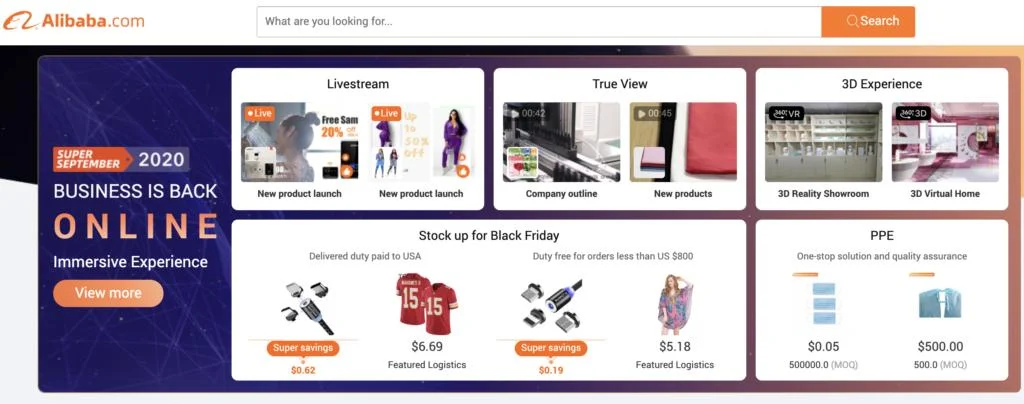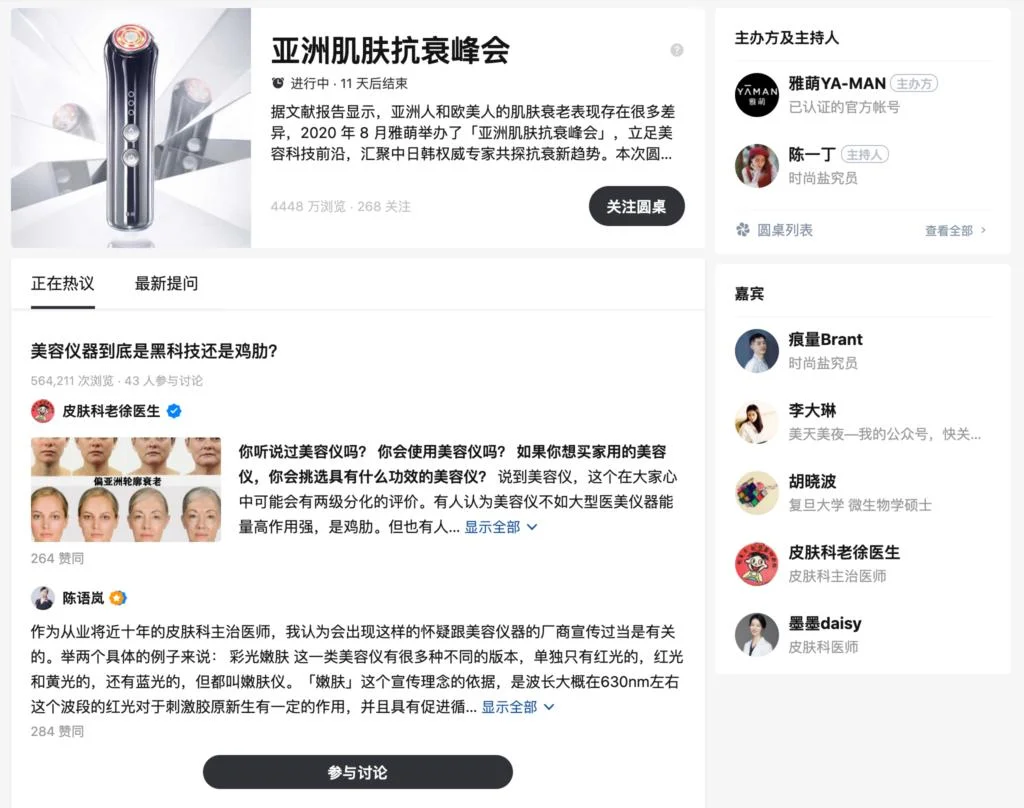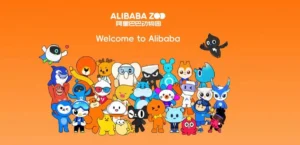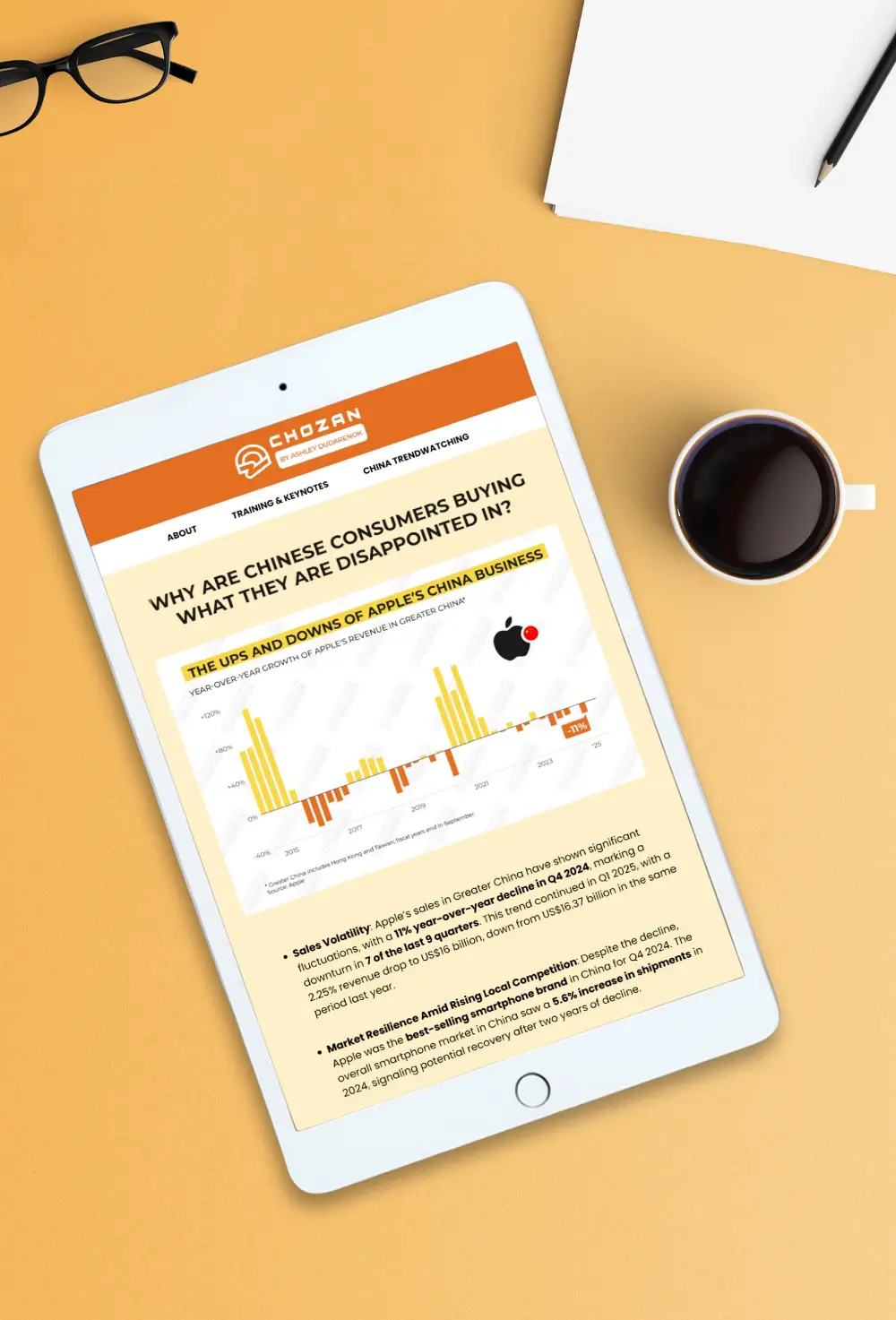CONTENT

By: Ashley Dudarenok
Updated:
The Chinese economy is booming, and its rising middle-class means increased demands across all sectors. B2B connections stemmed from China’s digital transformation. Jack Ma, the founder of Alibaba.com, became one of the fathers of China’s B2B e-commerce. Alibaba connects small businesses around the world with Chinese manufacturers and suppliers. Because of this, it thrived and expanded into one of the largest tech companies in the world. After the success of Alibaba, they created 1688.com. This new website was still a B2B model but trained for domestic Chinese buyers, manufacturers, and suppliers.
Recently, Alibaba has been expanding into the metaverse as businesses are trying out new technology. Their expansion is also welcome news. In the first quarter of 2022, Alibaba Group Chief Financial Officer Hong Xu said that Alibaba Group had a healthy quarter with a 9% year-on-year increase. This shows positive growth momentum and improves the operational efficiency of the company. It is no wonder Alibaba laid the foundations of Chinese B2B.
So, what will be the most important platforms for B2B in China in 2023? Here’s what you should know.

Alibaba’s success is proven with its more than 20 years of existence and still-growing company. They have been crucial in the B2B market, and it cannot be denied that no company in the West can compare to its scope and success. The company was named after a famous Chinese folktale and is now an important avenue for small businesses around the world. On the platform, shoppers can buy thousands of barrels of crude oil or just a single kid’s toy. In addition, the platform is also multilingual friendly, with more than 15 different languages a user can browse. Prices can be seen in different currencies, and most suppliers are from China with some international companies.
Alibaba is serving more than 1 billion Chinese customers and 1.31 billion global customers.. Because of the sheer number of their customers, they have created an Alibaba ecosystem to catch up with the demand. They have recently released an e-commerce app called “State Stick” that targets Gen Z with its trendy products and local Chinese goods. As of December 2022, the app is still in the closed beta stage and an invitation code is needed to register for the app.
Alibaba’s revenue in Q3 of 2022 is 242.58 billion yuan. Their annual revenue increased by 19% compared to last year.

1688 is Alibaba’s second website that is more focused on domestic B2B. The name was chosen as such since, in the early days of China’s internet, numbered URLs were more common than Pinyin or English ones. 1688 means an idea of a steady stream of riches or good fortune. In Chinese tradition, 8 is a lucky number associated with wealth which is why it is common to see phone numbers and other personal numbers having the number.
In this platform, many Chinese Alibaba sellers dropship their products from 1688 to international buyers. Although 1688 serves domestic buyers, it has several advantages over Alibaba, which also caters to international customers.
Many suppliers in 1688 came directly from factories or factories themselves. Hence, you can buy goods directly at factory prices, usually the lowest you can get in the market. In addition to factory prices, the platform caters to domestic consumers so the prices are all local prices. Compared to Alibaba, the prices on that platform are usually international or foreign prices. The price differential between the two platforms can often be considerable, but price-wise, 1688 wins.
For example, if you are looking for a dress on Alibaba, most prices average between 8.85 USD to 25 USD (55.8 CNY-157 CNY) while in 1688, the same dress could be bought for 27-96 CNY only. It is clear that 1688 wins on the price difference.
Speaking of price, Alibaba’s platform often has uncertain order prices. Sometimes, you have to haggle with a seller or supplier for the final price. This can be very frustrating as there is no control over the pricing, but in 1688’s platform, the prices are much more transparent and fixed.
Furthermore, the more you buy in bulk in 1688, the higher your discounts are. Even the shipping fee is clearly shown in 1688 so you can immediately calculate how much you will spend for a particular item. Alibaba’s pricing is vague, and shipment is often negotiated with the suppliers. Sadly, there are also cases where suppliers raise prices on the basis of rising raw materials.
When you buy on Alibaba’s platform, there is a minimum order quantity and it is generally large. While the product itself may be cheap, when you buy in bulk the price is multiplied or skyrocketed especially with shipping costs.
However, on the 1688 platform, there is no MOQ needed or in cases where there is a MOQ, it is often small enough that you don’t feel a pinch in your wallet. This is very friendly for small sellers because there is no risk of overstocking. It is also very beneficial especially for smaller businesses who are trying to take off.
Because of its advantages, there are more products and suppliers in 1688’s platform compared to Alibaba itself. However, keep in mind that due to the focus of 1688, the majority of the products and suppliers are locally made or from Chinese suppliers and manufacturers. Products may focus more on the domestic market without consideration of the overseas markets, and because of this, there are more unique products in 1688 you can’t find on Alibaba.

This social media is a lot like the western Quora – a Q&A community and the only one on the Chinese Internet. It is a good place for B2B businesses to strengthen their brand image and culture. With Chinese reliance on KOLs or thought leaders, a verified, official brand account on Zhihu can help brands establish themselves in their industry. It is also important for brands to take their names and have them verified early on in Zhihu, or they run the risk of having some ill-intentioned party using the handle and creating bad scandals or issues.
In 2022, Zhihu continued its high-quality growth and its third quarter reached 912 million yuan. The Q3 revenue is a year-on-year increase of 11% for the company. Their paid membership reached 10.9 million and their monthly active users remained at 97 million for the last quarter.
Brands can livestream, hold webinars, or have live chat with their target audience. It is a great way to discuss industry-specific issues and have potential interactions with other brands, customers, and the public.
On Zhihu, most users are educated, young, and Tier 1 city residents. These demographics are often looking for useful content for the products they are purchasing. Answering their questions is important to draw in these consumers. Brands should answer their customer’s pertinent questions rather than push marketing agendas on this platform.
Another key B2B social media channel in China is Maimai. Although at first glance it does not seem to be a B2B channel, its 110 million users is an important audience. This platform is recruitment-based and it has a social media function as well. The platform’s penetration rate is an impressive 83.8%.
Maimai is the top China-based career platform. Before you can sign up for it, Maimai requires users to identify themselves with legal IDs and their real names, so it is very transparent. It has over 29 million MAUs on its platform looking for jobs, inspiration, or just scrolling through.
The localized features of Maimai have helped it gain substantial momentum. The platform has an anonymous chat, is mobile-friendly, and has partnerships with major Chinese corporations that can boost the platform. Maimai’s deep understanding of the Chinese workplace culture makes it a popular social media channel for the average working Chinese. Users on Maimai are 60.94% male and 39.06% female. The stark imbalance in users is mainly due to the heavy employment of male employees from tech companies in China. However, the platform’s collective anonymity gives its users an added layer of security against frauds or scammers. Maimai has become an “insider” for its users on which companies have the best benefits, bad work environments, or other critical company information.
Furthermore, Maimai is one of the widely-used platforms in China but with virtually no exposure outside the country. This means that brands can take advantage of the market opportunity and network with relevant businesses in their industry. Since Maimai is a China-based channel, brands will need local employees to successfully navigate this platform.
WeChat is undoubtedly one of the most popular Chinese platforms. Virtually everyone uses the app, and its monthly activity in 2022 has risen to 1.299 billion MAU, up 3.8% year-on-year. The company’s revenue in Q2 of 2022 is around 134 billion yuan.
While B2B businesses can’t take the traditional route with this platform since it’s a semi-closed network, they can still use it. WeChat is a good platform for a brand’s KOLs which is key to a brand’s success in China. Additionally, WeChat groups can be made for potential clients, partners, or businesses. Like Zhihu, a brand’s thought leader should be knowledgeable, relatable, and can localize answers easily enough about the industry and brand. Aside from KOLs, KOCs (key opinion consumers) can also draw in traffic to your brand. These consumers know your products well enough and can be company employees that can help with enquiries, orders, and other CRM tasks.
Brands can create mini-programs on WeChat. Mini programs are important for brands on WeChat as they allow clients to place orders or explore other brand features.
Weibo is the Chinese equivalent to Twitter. On average, there are 253 million active daily users on the platform, while there are a total of 584 million MAUs on it. Weibo’s revenue reached $2.257 billion USD and a year-on-year increase of 33.6%.
B2B brands can have an official brand account on this platform and post content while working with their KOLs and KOCs. Just like any other social media platform, content must be engaging and interactive enough to generate buzz and keep consumers’ attention on your brand. Since the nature of the platform is fast-moving, keeping up with trends is a skill that is needed for this site.
Short videos targeting clients and industry leaders are effective. Short Q&A sessions, creative campaigns, and hashtags can help mobilize your brand on Weibo.
If your brand needs help and guidance we can help with training tailored to your specific needs or answer your most urgent questions on an expert call or a series of consultation sessions. Contact us and we’ll arrange a chat to find out what you need and move forward from there.
By subscribing to Ashley Dudarenok’s China Newsletter, you’ll join a global community of professionals who rely on her insights to navigate the complexities of China’s dynamic market.
Don’t miss out—subscribe today and start learning for China and from China!

A List of 14 Major MCNs in China


Top Online B2B Chinese Channels
Ashley Dudarenok is a leading expert on China’s digital economy, a serial entrepreneur, and the author of 11 books on digital China. Recognized by Thinkers50 as a “Guru on fast-evolving trends in China” and named one of the world’s top 30 internet marketers by Global Gurus, Ashley is a trailblazer in helping global businesses navigate and succeed in one of the world’s most dynamic markets.
She is the founder of ChoZan 超赞, a consultancy specializing in China research and digital transformation, and Alarice, a digital marketing agency that helps international brands grow in China. Through research, consulting, and bespoke learning expeditions, Ashley and her team empower the world’s top companies to learn from China’s unparalleled innovation and apply these insights to their global strategies.
A sought-after keynote speaker, Ashley has delivered tailored presentations on customer centricity, the future of retail, and technology-driven transformation for leading brands like Coca-Cola, Disney, and 3M. Her expertise has been featured in major media outlets, including the BBC, Forbes, Bloomberg, and SCMP, making her one of the most recognized voices on China’s digital landscape.
With over 500,000 followers across platforms like LinkedIn and YouTube, Ashley shares daily insights into China’s cutting-edge consumer trends and digital innovation, inspiring professionals worldwide to think bigger, adapt faster, and innovate smarter.
Please check your email and confirm your subscription.

Please check your email and confirm your subscription.

Please check your email and confirm your subscription.